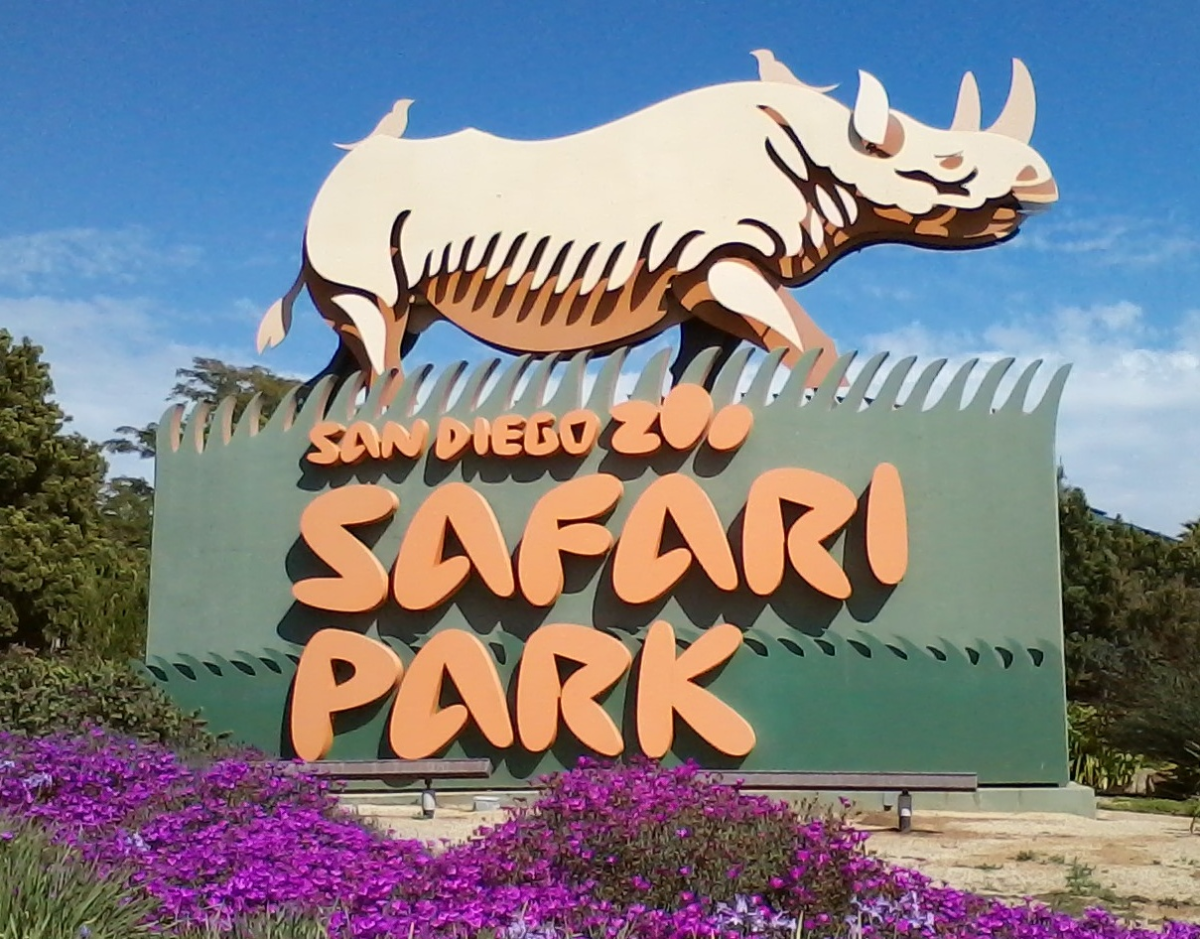The optimal route:
Arrive early! To best optimize your day start at the park opening, which is 9 a.m. all year round. The Safari Park gets hot, which wears out both people and animals, making the fall and winter the prime time to visit. To best avoid missing animals due to them being in their bedrooms, be sure to get an early start.
The Safari Park map is huge with lots of stray paths set about to lead you astray during your day. To get you started, after you go through the turnstiles, head directly to your right and through the aviary known as Wings of the World. This aviary features some of the most diverse birds in the park. It is impossible to miss the blue Victorian Crowned Pigeons, which tend to find themselves on the path. The Hammerkops are also a must-see in this aviary, with their massive and eclectic nest which features a few hidden non-branch objects if you look closely.
After Wings of the World, make your way to the left and find yourself at signpost number two. This signpost will lead you up to Walkabout Australia- just follow all the way up and stick to the left the whole way.
You will come across Kangaroo Walk which has the Western Gray Kangaroos as well as an array of birds. If you get lucky the albino wallaby Everest will be out in the habitat!

After making your way through the kangaroos, the next stop on the path is the platypus. The Safari Park is unique in that it features the only two platypuses outside of Australia. To see this special and unique sight, ask an employee wearing green for some tips on how to best spot them. The habitat is dark because platypuses are nocturnal, so to best help your eyes adjust to the dark, wear sunglasses into the cave and take them off after you enter.
After seeing the platypus, make your way up the path and visit the tree kangaroo and the cassowary. The path then leads into Condor Ridge. The Safari Park is famous for bringing the California Condor back from the brink of extinction.In 1982, only 22 of these birds remained in the wild, but thanks to the efforts of the Safari Park, more than 500 now thrive in their natural habitat! To learn more about this amazing condor program visit some of the birds at Condor Ridge and ask the individuals in red about the programs in place at the park.
After condors, head to the left and visit Tiger Trail. The Safari Park has had baby tigers both this year and last year. The newest Sumatran Tiger cub, Barong, was just in public view for the first time!
The Safari Park has just made their newest addition, which is the nature trail. You can now take this trail to connect tigers to the elephants. Visit the elephants by going through the Herb Garden gate. If you get a little lost just ask the employee usually stationed up there and they can point you in the right direction.
After the elephants, you should make your way down into Africa. This path offers a great preview of the open African Plains and the Asian Savanna. The next stop is Lion Camp. As of November 2024, the Safari Park has four lions. With two groups of lions that alternate being on habitat, your chances are good to see some of them during your time in lion camp.
Next, you can head on down to the Africa Tram. This is the biggest draw of the Safari Park. The tram is a 25 to 30-minute guided tour through the African Plains. It is included with the admission to the park, so just hop in line for a break from walking.
This is a must-see at the park with the tram featuring all the major African herbivores including zebras, giraffes and rhinos. The narrated tour also offers guests the opportunity to learn about the conservation efforts the park is working toward.

After the tram, we are back to walking- continue along the path to the African Outpost and African Woods. These areas feature animals such as the okapi, a variety of birds and cheetahs.
The African Woods will bring you to the elevators which you can either choose to take to the top or opt for the stairs. Both options lead to the same place which is near signpost nine. You will continue straight at signpost nine and find yourself at the gorillas. This is the last stop before you make your way to the exit.
It is a long walk, but you have officially seen all the biggest wildlife. Visit a gift shop if you feel inclined, but otherwise, you have seen the Safari Park.
For information about ticketing reference my San Diego Zoo guide as all the information is still relevant.






